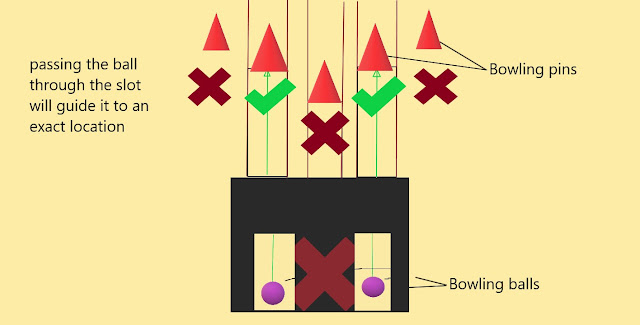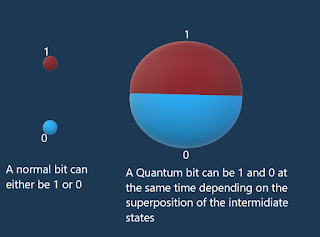Light interference
If you're not convinced yet that electrons can behave as particles and as a waves then I am going to rely on a real life situation for further explanations.
At a Saturday night, I went to the Bowling center with a bunch of friends to play the game but with our own little touch which is "there is no perfect ace". To do that we must avoid hitting the first bowling pin. After some thinking, we had the idea of establishing an obstacle that has two slots each one fits the ball comfortably, but the idea seemed to have a lot of flaws, as we succeeded to pass the ball through the slot and hit the pins behind it, the ball continuously followed the same pattern every time it passes through, it became guided. The only possibility to hit the central pin is by achieving a spinning roll that can pass through the spot and then deviated towards the center. Unluckily, we were all newbies for this kind of technique and the ball was heavy as well to try to make such a roll.
Obviously, we can assume that the groove worked as a guide, it's like guiding a bullet through a gun and if an object has a straight trajectory and you know a spot that it will pass through then: "two spots from a vector" meaning that the landing is already known, it's 100% predictable and no matter how much you shoot through the slot, the result will always turn to be the same. Well, this for particles for which we neglected the wave property.
At the macroscopic scale, things seemed to work differently:
Let's say we use a cathode ray containing electrons through the same slots, the ray passes normally but after starting to diminish the size of the groove to the point that it becomes thin as a single hair of the order of a wavelength, a strange phenomenon occurs, the solo spot on the screen seems to widen discontinuously, creating a pattern of stripes where the center is more bright than the other regions. Depending on the first concept, reducing the hole should eventually add more precision and guidance to the flying electrons. So what's wrong?
This pattern could only mean one thing: "Waves", this phenomenon can be easily seen in normal water waves. By dropping two drops of water aside on a stable water surface every one unleashes a series of waves that interact with each other. The phenomenon is known as wave interference.
In fact, two waves that are synchronous interfere together creating a sum wave that depends on the phase of the initial waves. Considering the simplest example of two waves having the exact same amplitude A, if the two possess the same phase then the result would be a bigger wave with an amplitude equal to 2A, this kind of interference is called a constructive interference. In the other hand, if two other waves have opposite phases they would nullify each other which is known as destructive interference. The first type is manifested by the bright spots, as the second type represents the black space between them. This justifies the famous saying " Light plus Light gives obscurity"
Please don't try to look at the electron as some sort of a macroscopic item or you are never gonna understand the quantum mechanics.
a stone is a stone, an ocean wave is an ocean wave, an electron says: "**** yeah I can be both".





Comments
Post a Comment